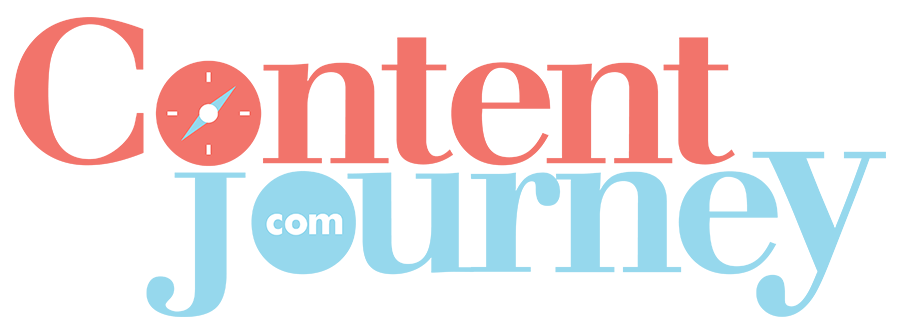Why Inclusive Language is Critical to Content Marketing
As a mental health professional, you’re no stranger to the sensitive obstacles you must navigate in the realm of mental health marketing. Your goal is to make sure everyone is aware of their wellness options and that they feel welcome at your treatment center. You want to avoid alienating entire communities who need help, which means implementing inclusive language in your brand voice.
Content Journey has experience assisting mental health clients with their content marketing – including strategies to make your mental health treatment center’s messaging more inclusive.
Keep reading to find practical resources and tips on how to trade exclusionary language for inclusive language, so your treatment center can be a true safe haven for all.
What is Inclusive Language?
“Inclusive language acknowledges diversity, conveys respect to all people, is sensitive to differences, and promotes equal opportunities,” according to the Linguistic Society of America (LSA).
From your daily client interactions to your treatment center’s blog, the language you use throughout your organization is a choice. These choices can be the deciding factor whether someone seeks treatment. When you consciously decide to use inclusive communication, you remove barriers and could change the trajectory of someone’s healing journey.
The Significance of Inclusivity in Content Marketing
Incorporating inclusive language in your treatment center’s content marketing has many benefits. If your wellness program’s core values are built on diversity, equity, and inclusion (DEI), inclusive language simply helps align your marketing efforts with your overall mission, vision, and goals. Inclusivity has other benefits worth noting as well.
Expand Audience Reach
Growing your reach is essential to connecting with more people who need your treatment services. Did you know that recent demographic trends report that America’s latest generations are the most diverse in history? Inclusive language helps expand your potential client list rather than alienate entire communities searching for help on their wellness journeys.
Build Trust and Brand Loyalty
Inclusive marketing research shows 70% of participants expressed they are more trusting of brands that represent diversity in ads. It’s worth noting that inclusive marketing is not limited to your wording – it also encompasses the images you use to promote your treatment center.
People crave a sense of belonging and security. When you implement inclusivity throughout the entirety of your marketing efforts, you establish your treatment center as a safe space.
Ask yourself, “How do I want a potential client to feel when they read or see our content?”
You most likely want the impression that your center is a welcoming environment – a place they can see themselves trusting your staff for help without fear of rejection or discrimination. Your marketing content can reflect that concept. If they feel safe at your treatment center, word spreads.
Non-Inclusive Language to Avoid
Have you heard of the snow crystal theory? Scientists have concluded the chances of two crystals being identical is zero. The same is true for people. Not one client is alike, and that is beautiful. Treat each one with the respect and dignity they deserve by avoiding assumptions and using exclusionary language.
Gender-Biased Language
It might not be your intention, but using gendered pronouns like she/her or he/him reflects bias. The same applies to terms involving your treatment center staff or your client’s occupation.
Opt for the gender-inclusive pronouns they/them. Other examples of gender-neutral terms include all, everyone, person, people, partner, or team. If you must speak to your client about their profession, make sure you’re referring to their gender-neutral job title (e.g., council member instead of councilman or councilwoman).
LGBTQIA+ Prejudice
Another faux pas to avoid is incorrect wording encompassing sexual orientation. Once again, always avoid assumptions. Your sexual orientation or ideas of sexuality may differ from your client’s. Refrain from terms like “preference” and don’t refer to sexual orientation as a noun.
Rather, use LGBTQIA+ community or gay/lesbian/bisexual person if you must. You can also ask for your client’s preferred terms if the content is specific to them.
Racial and Ethnic Insensitivity
Is race or ethnic status pertinent to you and your client’s conversation? If not, ask yourself why it’s necessary to include. It’s a good question to apply to any of the concepts in this section.
Always research what terms racial and ethnic groups use to refer to themselves. The American Psychological Association (APA)’s Bias-Free Language guide features an extensive section on racial and ethnic identity, including terms for specific origins paired with examples of exclusionary versus inclusive language.
Ableism
There are other unintentional, discriminatory phrases you might be using that are hurtful to people living with disabilities. For example, don’t label someone as a “handicapped person.” Instead, say they’re a person living with paralysis or whatever the specific case may be.
Remember that people come first. Disability should always be secondary.
“Person with a disability” is one way to fix your phrasing. National Center on Disability and Journalism (NCDJ) offers an entire Disability Language Style Guide of other suggestions on changing your language to be more inclusive.
Diagnoses
People are not their diagnoses. Treating them or labeling them as such can be stigmatizing and off-putting. “You’re acting so bipolar today,” “They are insane,” “That’s crazy,” or “That is giving me PTSD” are all forms of microaggressions toward people with mental health concerns. This wording is offensive and minimizes real health conditions.
Instead, avoid labeling people. Don’t say, “He’s an addict.” Instead, say, “He has a substance use disorder.”
Ageism
Be aware of how you’re speaking with people of a different age than you. Even if you’re talking in a joking manner, words like “childish,” “dinosaur,” or “old geezer” can be offensive.
Instead, we recommend checking out the American Association of Retired Persons (AARP’s) Guide to Ageist Language. It’s a great resource to learn adjectives that are viewed positively rather than insensitively.

Practical Tips for Implementing Inclusive Language
Ready to start implementing inclusive language throughout your marketing efforts? These key principles will guide you as you begin the process toward inclusivity.
Steps to take in your inclusive marketing journey:
- Research Audiences and Cultural Nuances. As stated previously, never assume and always research your client’s values. Other resources to reference while you’re researching include the Linguistic Society of America (LSA)’s Inclusive Language Guides, The Trevor Project’s Resource Center, The Conscious Style Guide, and AP Stylebook’s Inclusive Storytelling Chapter.
- Educate Yourself and Your Team. Like people, language is constantly changing. The AP Stylebook releases an updated copy each year for this reason. Create a style guide specific to your mental health treatment center as a helpful resource for your staff. Another idea is to host a team exercise to test hidden bias and learn from it.
- Ask for Client Feedback. Knowing how to gather client feedback will help you put their preferences first. They will also appreciate knowing you’re actively working toward inclusivity, which builds trust and loyalty.
- If in Doubt, Don’t. If you have questions about a term or phrase or something you’re about to write that gives you pause, leave it out. It’s better to be 100% sure rather than take the chance and alienate potential clients.
Let Content Journey Guide Your Marketing Efforts
At Content Journey, not only do we specialize in mental health marketing, we also focus on inclusivity within our own business. Just like you, we value and prioritize providing a welcoming, respectful atmosphere for all. Contact us today to learn how we can help you use inclusive language throughout your treatment center’s content marketing.







